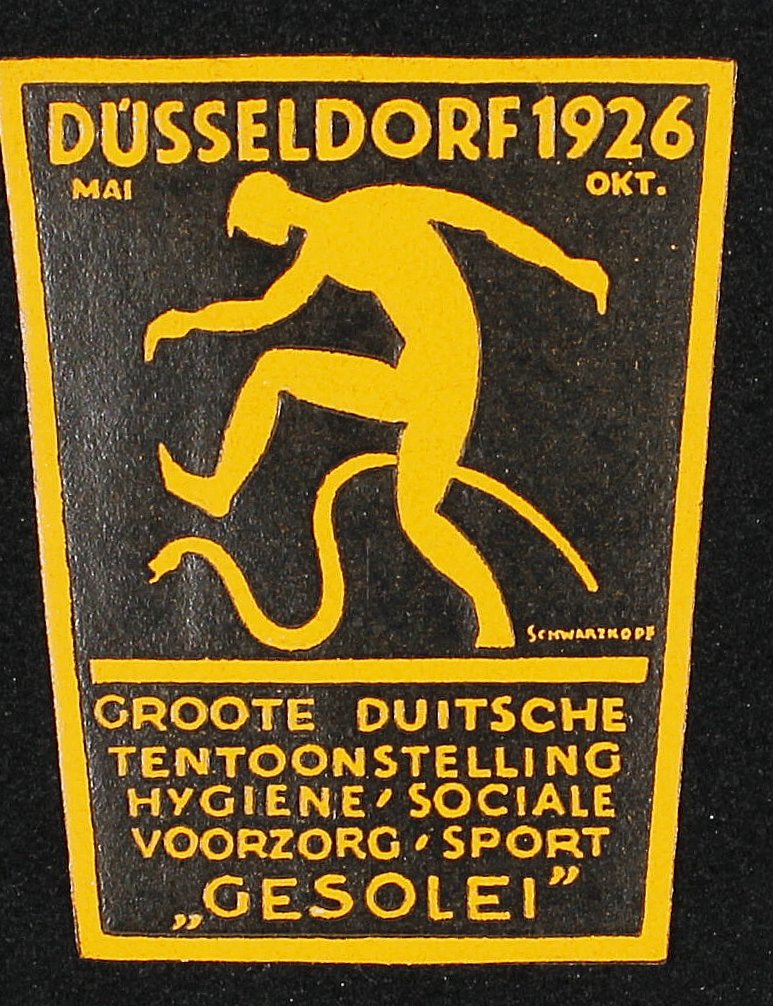Trapezförmige Reklamemarke bzw. Werbemarke, die für das Rheinisches Bundesschießen in Düsseldorf vom 27. Junis bis zum 4. Juli 1926 und für die Große Ausstellung Düsseldorf für Gesundheitspflege, soziale Fürsorge und Leibesübungen (GeSoLei) vom 8. Mai bis 15. Oktober 1926 in Düsseldorf wirbt.
Die Reklamemarke trägt folgenden Aufdruck:
"1926 / 27. Juni / 4. Juli / 29. RHEINISCHES / BUNDESSCHIESSEN / IN DÜSSELDORF / JÄGER UND SCHÜTZEN BESUCHT DIE / GROSSE / AUSSTELLUNG / DÜSSELDORF 1926"
Dargestellt ist eine Zielscheibe als Verweis auf das Rheinische Bundesschießen sowie ein Mann mit Schlange, ein Motiv, das aus der die Werbung für die GeSoLei stammte und von dem Künstler Richard Schwarzkopf entworfen wurde.
Reklamemarke, Düsseldorf, aus dem Jahre 1926.
Aufschrift: DÜSSELDORF 1926 / MAI OKTOBER / GROOTE DUITSCHE / TENTOONSTELLING / HYGIENE / SOCIALE / VOORZORG / SPORT / "GESOLEI"
en

